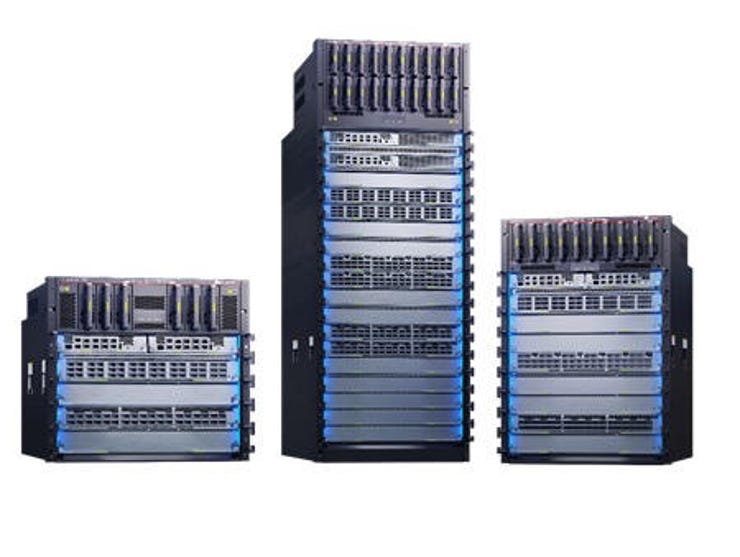Huawei looks to transform network management with autonomous platform

Huawei Technologies is looking to transform network management with its autonomous platform, which it says can resolve key pain points within the operation and maintenance of data centre networks. Its Autonomous Driving Network features intent-driven recommendations, simulation, and verification, as well as machine-based decision-making capabilities that are touted to better support enterprises in their digital transformation efforts.
Such initiatives are underway across many Asia-Pacific organisations today, with the global pandemic fuelling the urgent need to further digitalise their operations. The emergence of 5G technologies are also driving connectivity between humans and devices, as well as between machines, and transforming the way we live and work.
However, while digital transformation will enable companies to develop new services more quickly and sharpen their competitive edge, it poses several challenges to existing data centre network infrastructures.
A typical data centre network, for instance, can comprise tens of thousands of servers and may continue to expand to cope with growing data volume. This puts immense pressure on most organisations, which have limited human resources, and results in sluggish network deployment and service provisioning.
This network environment is also increasingly complex, with a plethora of configurations and policies to manage, making network changes highly complicated.
The problem is further exacerbated by frequent service changes and more time spent handling these changes. It also increases the likelihood of human errors that, in turn, can result in network faults.
Furthermore, traditional data centre networks can only detect faults passively, with little to no capabilities to predict them, and identifying potential faults within the network depends heavily on the administrator's experience and expertise. This can be time consuming and inefficient, as the network manager has to run through flow-by-flow analysis and segment-by-segment demarcation to locate the fault.
Building autonomy into next-generation networks
To ensure their digital transformation can be adequately supported, enterprises will need to address these pain points as well as future-proof the deployment and management of next-generation data centre networks.
Huawei designed its Autonomous Driving Network (ADN) to achieve that, introducing a platform that it says has the capabilities to be self-sufficient and requiring little manual intervention.
Its iMaster NCE-Fabric, for example, can automatically understand the intent and objectives of a service without manual input. It then recommends optimal network deployments that are best suited to operate in live scenarios and to the customer requirements.
The ADN also can evaluate whether network changes will affect live operations and determine if current network resources are sufficient to support the changes. The system bases its assessment on a five-layer digital twin model that uses network data collected in real-time, including configuration and traffic data.
Artificial intelligence (AI) chips further enable the ADN to detect network anomalies in real-time, based on its analysis of data captured across the network. Thanks to continuous learning and training, the system can identify root causes of 75 types of common faults in three minutes.
It analyses the potential impact of faults and recommends optimal resolutions based on a decision-making sub-system. And by bypassing the need for manual decision-making, the ADN enables enterprises to implement fault rectification in under five minutes.
Huawei believes telcos, in particular, can benefit from autonomous driving networks as these organisations face unique complexities.
A telecommunication network, for instance, typically provides a multitude of services such as mobile, home broadband, and enterprise services. An autonomous driving infrastructure, hence, must accurately understand the intent behind each of these different services and adapt to complex environments comprising multiple technologies.
Powered by a three-layer intelligent system network architecture, Huawei's ADN provides an edge intelligence layer to sense network status in real-time and simplify network protocols to improve automation capabilities. A digital twin model also enables network status to be traceable and predictable.
In addition, because it runs on an open cloud platform, it has the compute power required to train and optimise AI algorithms and develop applications to facilitate planning, design, service provisioning, operations and maintenance guarantees, and network optimisation.
Huawei's marketing director of data centre network products, Luo Jianggan, said: "We are committed to solving the issues encountered by enterprise customers throughout the lifecycle of data centre networks amidst their pursuit for digital transformation.
"Currently, Huawei's data centre network solution performs at L3 autonomous driving, promoting the development of ADNs in the industry. We plan to advance data centre networks to full autonomy in the next three to five years," Luo said.
At L3 autonomous driving, the ADN system can sense real-time environmental changes and, in certain domains, is able to optimise and adjust to the external environment to enable intent-based management.
By applying the advanced AI and analytical capabilities that power complex systems such as self-driving vehicles, to data centre networks, Huawei's Autonomous Driving Network aims to bring automation to core processes and inject higher intelligence into network operations and maintenance. The main goal here is to ensure enterprises have the infrastructure they need to facilitate their digital transformation.
Explore Huawei's Autonomous Driving Network solution.